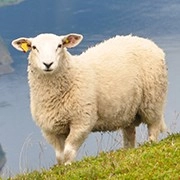Zebra Stripe Secrets

When we see a zebra, the first thing that grabs our attention is its bold black-and-white stripes. But why do zebras wear such striking patterns? Are they just for show, or do they serve a deeper purpose?
Let's explore this fascinating topic together and uncover how zebra stripes help with insect defense, camouflage, and even temperature control!
More Than Just a Pretty Pattern
For decades, scientists have debated the true purpose of zebra stripes. Now, thanks to modern research, we know that these patterns serve a variety of important functions—all of which help zebras survive in their environment.
As Dr. Tim Caro, a leading figure in zebra stripe research at the University of California, Davis, explains, these stripes provide multiple benefits at once.
Defense Against Insects
One of the strongest findings in recent years is that zebra stripes help deter biting insects, especially blood-sucking flies like horseflies and tsetse flies.
• Flies are attracted to large, dark, uniform surfaces.
• The high-contrast pattern of zebra stripes seems to confuse the flies' visual systems.
• Research published in Nature Communications by Dr. Caro and colleagues showed that fewer flies land on striped surfaces compared to plain ones.
In experiments using striped and solid-colored horse models, striped patterns attracted significantly fewer insects. For zebras living in fly-infested regions of Africa, this provides crucial protection from diseases carried by these pests.
Helping With Camouflage
Another possible function of zebra stripes is camouflage — but not in the way we might expect.
While black and white stripes may not blend perfectly into the green or brown landscape, they can help break up the outline of a zebra's body, especially when viewed from a distance or in a group.
• In motion, a herd of striped zebras creates a moving optical illusion that makes it difficult for predators, such as lions, to single out an individual zebra.
• In low light or among tall grasses, the disruptive pattern further confuses visual predators.
Studies suggest that this type of motion dazzle can interfere with a predator's depth perception and targeting ability during a chase.
Regulating Body Temperature
Another fascinating benefit of zebra stripes relates to temperature control — a crucial factor for animals living under the hot African sun.
According to Dr. Stephen Cobb, who conducted field studies in Kenya, zebra stripes may help with,
• Airflow: The alternating black and white stripes heat at different rates, causing tiny air currents over the zebra's body. This airflow can enhance cooling.
• Sweat evaporation: The stripes might improve the efficiency of sweat evaporation, helping the zebra maintain a stable internal temperature.
Although the exact impact is still being studied, many scientists believe this thermal regulation gives zebras an edge in their harsh environment.
Social Recognition and Communication
On top of these physical benefits, zebra stripes also play a role in social interaction.
• Every zebra has a unique stripe pattern, much like a fingerprint.
• These patterns help zebras recognize individuals within their herd.
• Stripe patterns may also aid in mother-calf bonding and other social behaviors.
Social recognition is vital for maintaining group cohesion and reducing stress in these highly social animals.
Nature's Ingenious Design
It's amazing to think that one simple feature — stripes — can provide so many advantages at once. From insect defense and camouflage to temperature control and social bonding, zebra stripes demonstrate nature's incredible ingenuity.
This knowledge also inspires practical applications. Scientists are exploring stripe-inspired materials to repel insects or improve cooling in clothing and buildings — showing how animal adaptations can benefit human technology.
Final Thoughts: More Than Meets the Eye
So, what are zebra stripes for? The answer is: they serve multiple smart functions that help zebras survive and thrive in their environment.
Next time you see a photo or video of a zebra, you'll know that those beautiful stripes are not just for decoration — they're a powerful tools.

Now we'd love to hear from you, Lykkers — which animal adaptation do you find the most fascinating? Share your favorites with us, and let's keep discovering the wonders of nature together!

 · Animal team
· Animal team